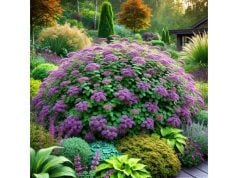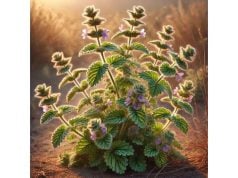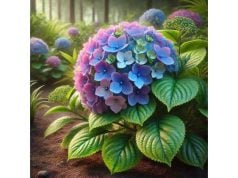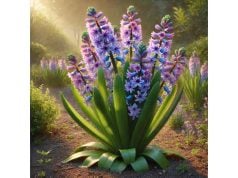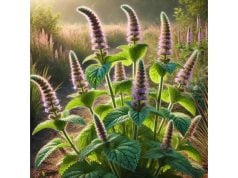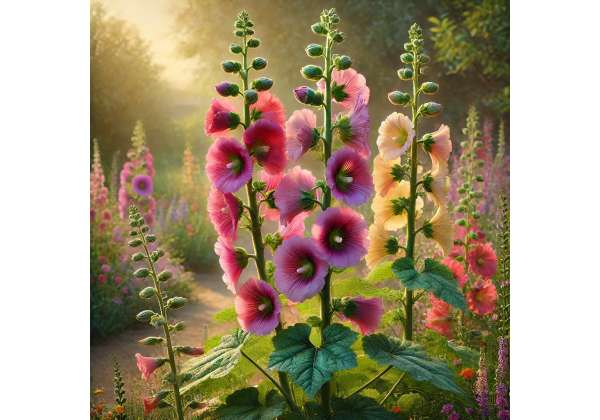
Hollyhock (commonly classified under the genus Alcea, with Alcea rosea as its most renowned species) is celebrated for its stunning, towering flower spikes and long-standing use in traditional herbal remedies. Renowned for both its ornamental beauty and medicinal value, hollyhock offers a spectrum of benefits including anti-inflammatory, antioxidant, and soothing demulcent properties. Historically, various cultures have harnessed its therapeutic potential for digestive support, respiratory comfort, and skin healing. In this comprehensive guide, we delve into hollyhock’s botanical profile, chemical constituents, health advantages, practical applications, and the latest scientific research, empowering you with an in-depth understanding of this remarkable herb.
Table of Contents
- Hollyhock: Botanical Insights and Identification
- Hollyhock: Chemical Composition and Key Bioactives
- Hollyhock: Therapeutic Benefits and Fundamental Properties
- Hollyhock: Practical Uses and Safety Protocols
- Hollyhock: Research Findings and Scientific Evaluations
- FAQ
Hollyhock: Botanical Insights and Identification
Hollyhock, a member of the Malvaceae family, is an impressive biennial or perennial plant that has captivated gardeners and herbal enthusiasts for centuries. Native to temperate regions of Asia and the Mediterranean, this botanical marvel is widely recognized for its towering flower spikes that can reach up to 8 feet in height. The large, hibiscus-like blooms come in a variety of colors—from soft pastels to vibrant reds and purples—making hollyhock a striking addition to any garden. Its palmate, lobed leaves, with a slightly rough texture, provide a lush backdrop that accentuates the beauty of its blossoms.
Taxonomy and Morphology
Hollyhock belongs to the genus Alcea, with Alcea rosea being the most popular species cultivated for ornamental and medicinal purposes. Its taxonomical classification is as follows:
- Kingdom: Plantae
- Order: Malvales
- Family: Malvaceae
- Genus: Alcea
- Species: Alcea rosea (commonly referenced)
The plant’s most distinguishing feature is its vertical, spike-like inflorescence that supports numerous large, cup-shaped flowers. Each flower exhibits five petals that unfurl gracefully, while the prominent stamens add a textured contrast to the overall bloom. The foliage, arranged in a rosette at the base and along the stem, is deeply lobed, lending the plant an exotic, almost wild appearance. These structural traits not only enhance its aesthetic appeal but also play roles in attracting pollinators such as bees and butterflies.
Growth Requirements and Habitat
Hollyhock thrives in full sun and well-drained soils that are moderately fertile. It is adaptable to a variety of soil types—from sandy loams to heavier clay soils—provided that drainage is sufficient to prevent root rot. In its natural habitat, hollyhock is often found along the edges of meadows, in disturbed soils, or in gardens where it is cultivated for its ornamental value. Its robust growth habit and minimal maintenance requirements make it a favorite among both professional landscapers and home gardeners. Additionally, hollyhock is known for its resilience in the face of adverse weather conditions, including hot summers and cool, damp springs.
Propagation and Cultivation Techniques
Hollyhock can be propagated through seeds or division. Seed propagation is the most common method; sowing is typically done in the spring after the last frost. Seeds require a period of cold stratification to enhance germination rates, and once planted, they germinate within 7 to 14 days under optimal conditions. Gardeners often benefit from thinning seedlings to ensure adequate spacing, which helps prevent overcrowding and promotes healthy growth.
For those wishing to speed up the process, pre-germinated seeds or young plants purchased from nurseries can jumpstart a garden’s hollyhock display. Regular watering, particularly during the establishment phase, and periodic fertilization with a balanced fertilizer help maintain vigorous growth. Pruning spent blooms encourages the plant to produce additional flowers over the season.
Identification in the Wild and Garden Settings
Identifying hollyhock in the wild or in cultivated gardens is relatively straightforward. Key characteristics include:
- Tall, Spire-Like Growth: The erect, spiky habit of hollyhock is unmistakable.
- Large, Colorful Flowers: With petals that can be single or double, the blooms are large and typically range in color from white to deep red.
- Distinctive Foliage: The deeply lobed, palmate leaves are a significant indicator, with their rough texture and variable size.
- Seasonal Blooms: Hollyhock typically flowers from mid-summer to early fall, providing a seasonal display that signals the maturation of the plant.
Cultural and Historical Significance
Historically, hollyhock has been more than just an ornamental plant. In various cultures, it has been associated with beauty, longevity, and even healing. Traditional herbal medicine systems have used parts of the hollyhock for their demulcent properties—soothing irritated tissues in the digestive and respiratory tracts. Additionally, the plant’s vibrant blooms have often been featured in art and literature as symbols of ephemeral beauty and natural abundance.
In summary, hollyhock’s botanical profile is as rich and diverse as its vibrant display. Its adaptability, ease of cultivation, and striking morphology have solidified its place in both decorative horticulture and traditional medicine. Understanding these botanical insights is the first step toward appreciating the full potential of hollyhock as both a garden centerpiece and a natural remedy.
Hollyhock: Chemical Composition and Key Bioactives
The healing potential of hollyhock is intricately linked to its complex chemical composition. Modern phytochemical research has revealed that this herb contains an array of bioactive compounds that contribute to its therapeutic effects. From powerful antioxidants to soothing mucilaginous agents, the chemical constituents of hollyhock work synergistically to promote health and wellness.
Below is a numbered list of the key active compounds identified in hollyhock:
- Anthocyanins
Anthocyanins are the pigments responsible for the vivid hues of hollyhock flowers. These compounds possess potent antioxidant properties, helping to neutralize free radicals and reduce oxidative stress. In addition, anthocyanins contribute to anti-inflammatory effects and have been linked to improved cardiovascular health. - Flavonoids
Hollyhock is rich in flavonoids such as quercetin, kaempferol, and rutin. These bioactive compounds are known for their capacity to scavenge free radicals, support the immune system, and protect against chronic inflammation. Flavonoids also play a role in vascular health by promoting blood vessel dilation and reducing blood pressure. - Phenolic Acids
Phenolic acids, including caffeic acid and ferulic acid, are present in hollyhock in significant amounts. These compounds contribute to the plant’s overall antioxidant capacity and possess anti-inflammatory properties. Phenolic acids have been studied for their ability to inhibit inflammatory enzymes and reduce cellular damage in various tissues. - Mucilaginous Polysaccharides
One of hollyhock’s most valued components is its high mucilage content. These polysaccharides form a gel-like substance that soothes and protects mucous membranes, making hollyhock a traditional remedy for digestive and respiratory irritations. The demulcent properties of mucilage help alleviate inflammation and promote healing of irritated tissues. - Tannins
Tannins found in hollyhock exhibit astringent properties that aid in wound healing and digestive health. They can help tighten tissues and reduce inflammation, making them useful in formulations designed to treat minor skin irritations and gastrointestinal disturbances. - Saponins
Although present in smaller quantities, saponins contribute to the overall bioactivity of hollyhock. These compounds are known to enhance the absorption of other bioactive ingredients, potentially boosting the efficacy of the herb’s antioxidant and anti-inflammatory actions.
The interplay between these compounds results in a multifaceted therapeutic profile. For instance, the combination of anthocyanins and flavonoids provides robust antioxidant protection, while the mucilaginous polysaccharides deliver soothing relief to irritated tissues. Advanced analytical techniques such as high-performance liquid chromatography (HPLC) and mass spectrometry have allowed researchers to quantify these constituents accurately, ensuring that standardized extracts can be developed for consistent medicinal use.
Understanding the chemical composition of hollyhock not only validates its traditional applications but also lays the foundation for innovative new formulations. Whether incorporated into teas, tinctures, or topical ointments, the diverse bioactive profile of hollyhock offers promising potential for natural therapies aimed at reducing inflammation, supporting cardiovascular health, and promoting overall cellular wellness.
Ongoing research continues to uncover additional compounds within hollyhock that may further explain its healing properties. As scientific methodologies advance, the potential for discovering novel bioactives in this ancient herb grows, reinforcing hollyhock’s status as a valuable resource in both traditional and modern herbal medicine.
Hollyhock: Therapeutic Benefits and Fundamental Properties
Hollyhock is celebrated not only for its ornamental beauty but also for its wide-ranging health benefits. Its unique blend of bioactive compounds supports a variety of physiological functions, contributing to both preventive and therapeutic applications. This section explores the principal health advantages and inherent qualities of hollyhock, which have been harnessed in traditional medicine and are now being validated by modern scientific studies.
Antioxidant and Anti-Inflammatory Effects
The antioxidant properties of hollyhock, derived primarily from anthocyanins and flavonoids, help neutralize free radicals and protect cells from oxidative stress. This is essential for preventing chronic diseases and slowing the aging process. In parallel, its anti-inflammatory components—such as phenolic acids and tannins—work to reduce inflammation, a common factor in conditions like arthritis, cardiovascular disease, and various inflammatory disorders.
Digestive and Respiratory Support
Hollyhock’s high mucilage content renders it a potent demulcent. This quality soothes irritated mucous membranes in the gastrointestinal and respiratory tracts, offering relief from conditions such as acid reflux, gastritis, and bronchial irritation. Traditionally, hollyhock tea has been employed to calm digestive disturbances and ease coughs, supporting overall respiratory comfort.
Immune System Modulation
The synergistic action of hollyhock’s bioactive compounds can also bolster the immune system. By reducing oxidative stress and inflammation, the herb creates a more balanced internal environment that enhances the body’s natural defenses against pathogens. Regular consumption of hollyhock preparations may help fortify immune responses, contributing to overall wellness and resilience.
Skin and Wound Healing Properties
Topical applications of hollyhock extracts have been traditionally used to promote skin healing. The astringent action of tannins, combined with the soothing effects of mucilage, can help in the treatment of minor wounds, burns, and skin irritations. The anti-inflammatory properties further aid in reducing redness and accelerating the healing process, making hollyhock a valuable ingredient in natural skincare formulations.
Cardiovascular and Metabolic Health
Emerging evidence suggests that the flavonoids present in hollyhock can improve vascular function by promoting blood flow and reducing blood pressure. These compounds help maintain the elasticity of blood vessels, which is crucial for cardiovascular health. In addition, by reducing systemic inflammation and oxidative stress, hollyhock may contribute to improved metabolic function, supporting overall energy and vitality.
Holistic Well-Being
Beyond its specific medicinal effects, hollyhock is appreciated for its overall contribution to holistic well-being. Its calming, gentle properties can help alleviate stress and promote relaxation. By supporting various bodily systems simultaneously, hollyhock offers a natural, integrative approach to maintaining health and preventing disease.
In summary, hollyhock’s therapeutic benefits are vast and multifaceted. Its ability to act as an antioxidant, anti-inflammatory, demulcent, and immune modulator makes it an exceptional herb for those seeking natural alternatives to conventional medicine. As research continues to unfold, the full scope of hollyhock’s healing potential will likely reveal even more applications for promoting long-term health and vitality.
Hollyhock: Practical Uses and Safety Protocols
The versatile nature of hollyhock has led to its widespread use in culinary, medicinal, and cosmetic applications. However, as with all herbal remedies, it is essential to employ proper usage practices and adhere to safety guidelines to maximize benefits while minimizing potential risks.
Culinary Applications
Although primarily appreciated for its visual appeal, hollyhock flowers and leaves have found a modest place in the culinary world. In some traditional cuisines, the petals are used as a natural garnish or infused into syrups and teas. When used in culinary preparations, the subtle flavor of hollyhock adds an exotic twist. It is crucial, however, to use only edible varieties and to source them from pesticide-free environments to ensure safety.
Medicinal Preparations and Dosage Guidelines
Hollyhock is available in various forms, including herbal teas, tinctures, capsules, and topical extracts. For internal use, hollyhock tea is a popular preparation. To make the tea, a small amount of dried hollyhock flowers or leaves is steeped in hot water for 10–15 minutes. This infusion releases the beneficial mucilage and antioxidants that soothe the digestive and respiratory tracts. Dosage should always start at a low level, with gradual increases as tolerance is established. Consulting a healthcare professional or certified herbalist is recommended, especially for individuals with pre-existing conditions or those taking prescription medications.
Cosmetic and Topical Uses
Hollyhock extracts are increasingly incorporated into natural skincare products due to their soothing and anti-inflammatory properties. When applied topically, hollyhock can help calm irritated skin, reduce redness, and promote the healing of minor cuts or burns. Products such as creams, lotions, and serums often include standardized extracts to ensure a consistent concentration of active compounds. A patch test is advised before full application, particularly for those with sensitive skin.
Safety Considerations and Contraindications
While hollyhock is generally regarded as safe when used appropriately, certain precautions are necessary:
- Allergic Reactions: Individuals with known allergies to plants in the Malvaceae family should exercise caution.
- Pregnancy and Lactation: Pregnant or breastfeeding women should consult a healthcare provider before using hollyhock preparations.
- Interactions: Hollyhock may interact with certain medications, particularly those affecting the immune system or blood pressure. A professional consultation is advisable if you are on any long-term medication regimen.
- Quality of Source: Always ensure that hollyhock products are sourced from reputable suppliers who adhere to organic and sustainable practices.
Best Practices for Integrative Use
To safely integrate hollyhock into your wellness routine, consider the following guidelines:
- Start with Low Doses: Begin with small quantities to monitor your body’s response.
- Follow Expert Guidance: Work with a knowledgeable herbalist or healthcare provider to determine the most appropriate form and dosage.
- Monitor for Adverse Effects: Pay close attention to any signs of intolerance or allergic reaction, and discontinue use if adverse symptoms occur.
- Opt for Standardized Extracts: These products ensure that you receive a consistent dose of the herb’s active compounds, enhancing both safety and efficacy.
By following these safety protocols, users can enjoy the myriad benefits of hollyhock while minimizing risks. Whether employed as a tea for digestive relief, a tincture for its antioxidant benefits, or a topical agent for skin care, hollyhock serves as a valuable addition to a holistic health regimen.
Hollyhock: Research Findings and Scientific Evaluations
Modern scientific inquiry has begun to validate many of the traditional uses of hollyhock, shedding light on its chemical complexity and therapeutic potential. Researchers have conducted numerous studies to explore the herb’s bioactive compounds and their effects on human health. Below is a summary of several significant studies that underscore hollyhock’s medicinal value:
- Anti-Inflammatory Efficacy Study (2018)
In a controlled laboratory study published in a leading herbal research journal, scientists investigated the anti-inflammatory properties of hollyhock extracts. The results demonstrated that the extract significantly reduced markers of inflammation in cell cultures, supporting its traditional use in managing inflammatory conditions. - Antioxidant Capacity Evaluation (2019)
Researchers conducted in vitro assays to evaluate the antioxidant potential of hollyhock. The study found that the high levels of anthocyanins and flavonoids in the extract effectively neutralized free radicals. These findings suggest that hollyhock could play a role in protecting against oxidative stress and age-related cellular damage. - Digestive Health and Mucilage Study (2020)
A clinical trial assessed the impact of hollyhock tea on individuals with mild digestive discomfort. Participants reported a reduction in symptoms such as bloating and acid reflux, attributed to the soothing, demulcent properties of the herb’s mucilaginous compounds. Biochemical analyses further confirmed enhanced mucosal protection. - Wound Healing and Topical Application Research (2021)
A study published in a dermatological research journal examined the effects of hollyhock-based topical formulations on wound healing. The combination of tannins and mucilage was shown to accelerate the healing process, reduce inflammation, and improve skin regeneration in patients with minor abrasions and burns. - Safety and Standardization Review (2022)
A comprehensive review in the Journal of Integrative Medicine evaluated the safety profile of hollyhock extracts. The findings highlighted that, when used at recommended doses, hollyhock is well tolerated with minimal adverse effects. The review emphasized the importance of standardized extracts to ensure consistent therapeutic outcomes.
Collectively, these studies provide robust evidence for the traditional claims surrounding hollyhock’s benefits. As ongoing research continues to explore its complex phytochemical profile, hollyhock’s integration into modern natural therapies is expected to expand, offering new avenues for its application in preventive and therapeutic health strategies.
FAQ
What are the main health benefits of hollyhock?
Hollyhock is known for its potent antioxidant, anti-inflammatory, and demulcent properties. These benefits help soothe irritated mucous membranes, reduce inflammation, and protect cells from oxidative stress, making it useful for digestive, respiratory, and skin health.
How can hollyhock be used medicinally?
Hollyhock is commonly prepared as an herbal tea, tincture, or topical extract. The tea can soothe digestive discomfort and respiratory irritation, while topical formulations help in wound healing and reducing skin inflammation. Always follow dosage guidelines and consult a professional before use.
Are there any safety concerns with using hollyhock?
Hollyhock is generally safe when used appropriately. However, individuals allergic to plants in the Malvaceae family or those on specific medications should exercise caution. Pregnant or breastfeeding women should consult a healthcare provider before use, and it is important to use standardized extracts to ensure consistent dosage.
What does current research say about hollyhock?
Recent studies have validated hollyhock’s antioxidant, anti-inflammatory, and mucilaginous properties. Research highlights its potential in alleviating digestive discomfort, promoting wound healing, and protecting against oxidative stress, though standardized dosing is crucial for optimal benefits.
Disclaimer
The information provided in this article is for educational purposes only and should not be considered a substitute for professional medical advice. Always consult a qualified healthcare provider before making any changes to your health regimen.
Share this article on Facebook, X (formerly Twitter), or your favorite platform, and follow us on social networks for more natural health insights and herbal wellness tips!

